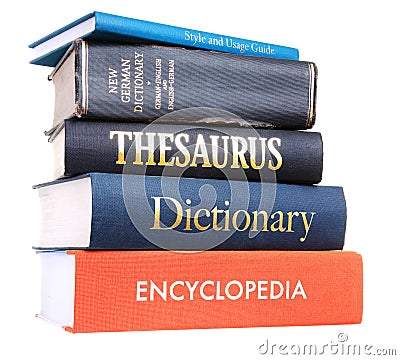

You can use reference material (such as dictionaries, encyclopedias, biographies, almanacs and atlases) to find short, basic, and factual information. Reference articles are written in simple language for a general public and are authored by editorial teams. They are good sources to use when initiating a research project.
How do I identify reference articles in a database?
Some databases, such as Grolier Multimedia Encyclopedia, only contain reference articles, so you would cite them as REFERENCES. But in other databases, the results of a keyword search come from many different types of information sources. In these databases, results are subdivided into categories based on where the information was originally printed, so look for the REFERENCES link.
Magazines (such as Scientific American) contain articles written by journalists, who are expert writers, but not necessarily experts on the subject of their article. Magazine articles are geared toward a general audience, go into more detail than reference sources, and tend to be accompanied by advertisements and photos. They rarely contain bibliographic citations.
In databases, the results of a keyword search come from many different types of information sources. Results are subdivided into categories based on where the information was originally printed, so pay attention to the category of your article.

Newspaper articles are usually published daily about current events and developments. They are considered primary sources. because they report on events.
Newspaper articles are written for a general audience by journalists, who are not necessarily experts on a subject, but writers with strong professional ethics about telling the truth.
Where do I find newspapers in databases?
Some databases, such as Newspaper Source, only contain newspaper articles. In other databases, look for articles categorized under NEWS or NEWSPAPERS to get newspaper articles.
 Academics, scholars, researchers and other experts in a field often publish in journals (also known as peer reviewed, scholarly, or academic journals). The articles in journals tend to focus on a specific area or discipline (e.g. Nature or the New England Journal of Medicine) and as a result contain vocabulary aimed at an expert audience. Articles published in these journals have abstracts, graphs and data, and are heavily supported by references to other scholarly material (both in text and in extensive reference lists).
Academics, scholars, researchers and other experts in a field often publish in journals (also known as peer reviewed, scholarly, or academic journals). The articles in journals tend to focus on a specific area or discipline (e.g. Nature or the New England Journal of Medicine) and as a result contain vocabulary aimed at an expert audience. Articles published in these journals have abstracts, graphs and data, and are heavily supported by references to other scholarly material (both in text and in extensive reference lists).
How do I identify journal articles in a database?
In many databases, the results of a keyword search come from different types of information sources. Results are subdivided into categories based on where the information was originally printed, so look for the link that says ACADEMIC JOURNAL, SCHOLARLY JOURNAL, or PEER REVIEWED JOURNAL to access journal articles in a database.

Before using a website as a source to support your academic work, you must evaluate it because information on the open web can be authored by anyone. Consider the website's currency, authority, purpose, objectivity, and writing style. Ask your teacher or librarian if you are not sure if the website is a good source.
When citing a website, please look for the following important pieces of information:
![]()
Streaming video and other multimedia are information sources that are not text based. They can be helpful in understanding a topic and can be found on the open web as well as databases, such as Discovery Education. If you find your multimedia information source on the open web, remember to evaluate the currency, authorship, purpose and objectivity of it.
If you are using NoodleTools to help you cite your information sources, select VIDEO CLIP (ONLINE) or the multimedia description that best fits your source.
NoodleTools helps you create bibliographies and organize research projects. For the "Global Health" project: